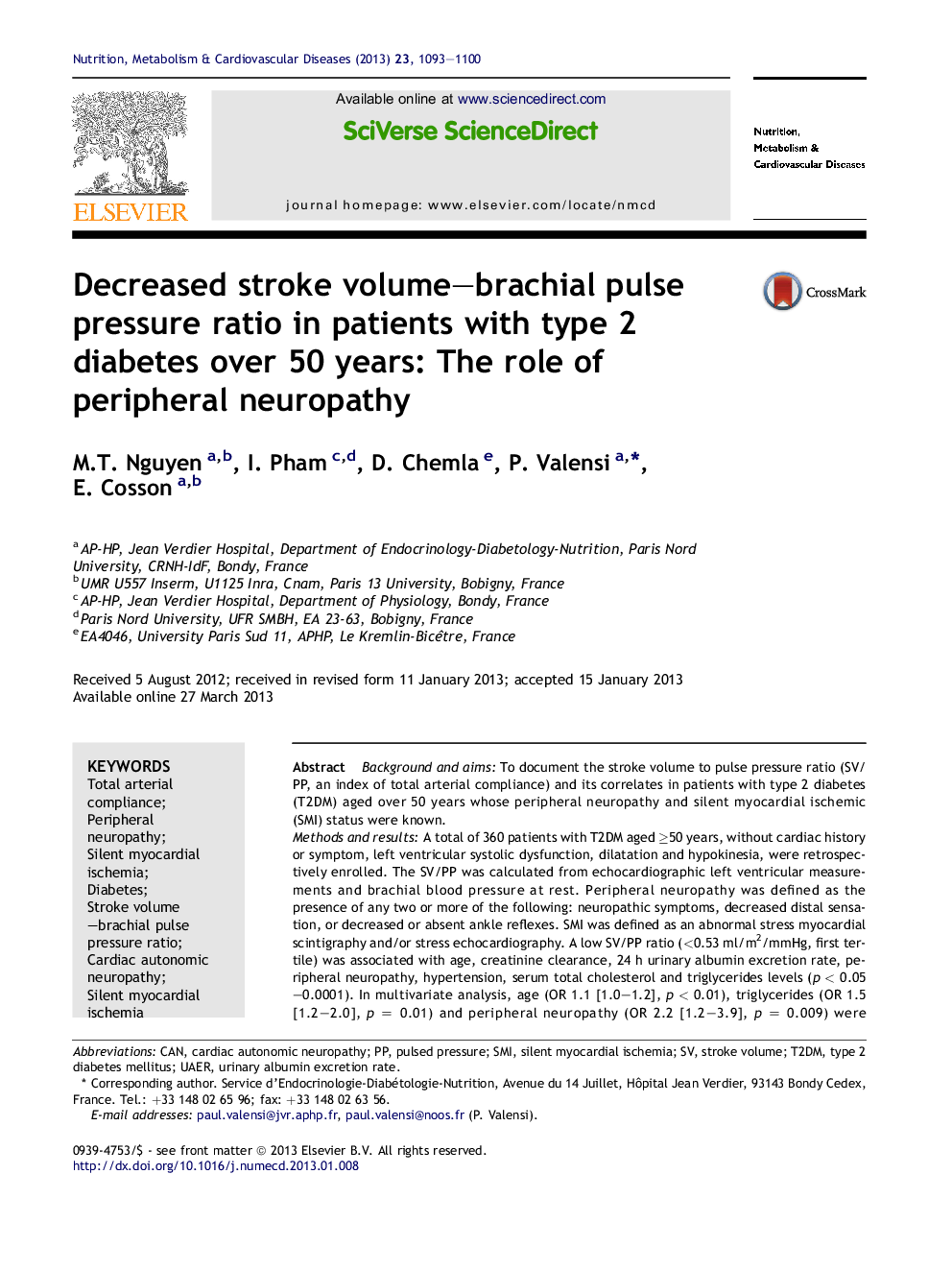| Article ID | Journal | Published Year | Pages | File Type |
|---|---|---|---|---|
| 5996776 | Nutrition, Metabolism and Cardiovascular Diseases | 2013 | 8 Pages |
Background and aimsTo document the stroke volume to pulse pressure ratio (SV/PP, an index of total arterial compliance) and its correlates in patients with type 2 diabetes (T2DM) aged over 50 years whose peripheral neuropathy and silent myocardial ischemic (SMI) status were known.Methods and resultsA total of 360 patients with T2DM aged â¥50 years, without cardiac history or symptom, left ventricular systolic dysfunction, dilatation and hypokinesia, were retrospectively enrolled. The SV/PP was calculated from echocardiographic left ventricular measurements and brachial blood pressure at rest. Peripheral neuropathy was defined as the presence of any two or more of the following: neuropathic symptoms, decreased distal sensation, or decreased or absent ankle reflexes. SMI was defined as an abnormal stress myocardial scintigraphy and/or stress echocardiography. A low SV/PP ratio (<0.53 ml/m²/mmHg, first tertile) was associated with age, creatinine clearance, 24 h urinary albumin excretion rate, peripheral neuropathy, hypertension, serum total cholesterol and triglycerides levels (p < 0.05-0.0001). In multivariate analysis, age (OR 1.1 [1.0-1.2], p < 0.01), triglycerides (OR 1.5 [1.2-2.0], p = 0.01) and peripheral neuropathy (OR 2.2 [1.2-3.9], p = 0.009) were independently associated with a low SV/PP. The patients with peripheral neuropathy had lower SV (p < 0.01) and higher PP (p < 0.05) than those without, and only lower SV after adjustment for age and nephropathy. Similar results were obtained in the patients with and without SMI.ConclusionPeripheral neuropathy was independently associated with decreased SV/PP, mainly through decreased SV, in patients with T2DM over 50 years.
